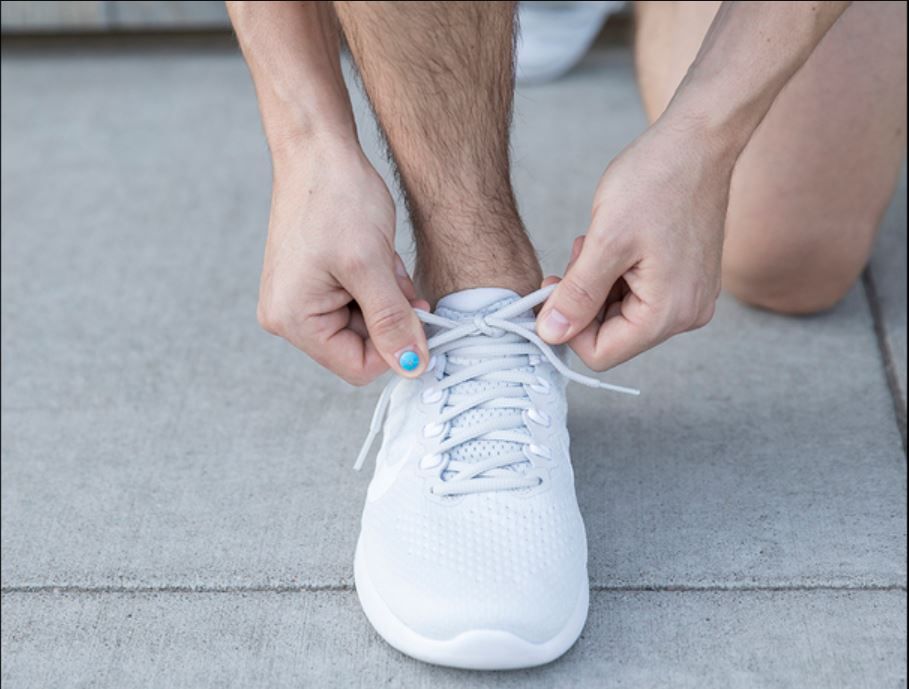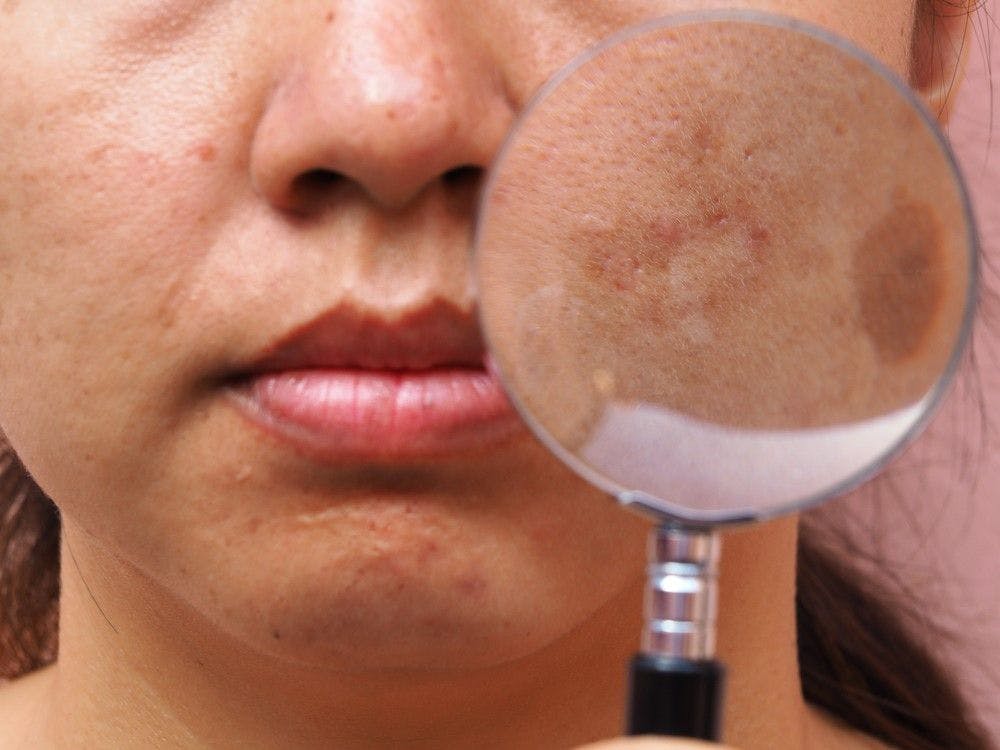- Acne
- Actinic Keratosis
- Aesthetics
- Alopecia
- Atopic Dermatitis
- Buy-and-Bill
- COVID-19
- Case-Based Roundtable
- Chronic Hand Eczema
- Chronic Spontaneous Urticaria
- Drug Watch
- Eczema
- General Dermatology
- Hidradenitis Suppurativa
- Melasma
- NP and PA
- Pediatric Dermatology
- Pigmentary Disorders
- Practice Management
- Precision Medicine and Biologics
- Prurigo Nodularis
- Psoriasis
- Psoriatic Arthritis
- Rare Disease
- Rosacea
- Skin Cancer
- Vitiligo
- Wound Care
Publication
Article
Dermatology Times
UV sensor as nail art
Author(s):
La Roche-Posay is developing a nail art version of My UV Patch with clinical trials to start this year.
La Roche-Posay with L'Oreal have developed a nail art version of “My UV Patch.” Called "UV Sense," it's thumbnail size and monitors UV exposure. A clinical trial will start later this year. (Photo courtesy of L'Oreal.)

John Rogers, PhD

La Roche-Posay has developed a nail art version of “My UV Patch,” a wearable skin sensor that monitor’s UV exposure. The nail art version, called UV Sense, is an electronic sensor that collects real-time data on UV exposure.
It is less than two millimeters thick, nine millimeters in diameter and is designed to be worn on the thumbnail. It is paired to a smartphone application using NFC technology to collect and display daily UVA and UVB exposure data for up to three months. It also offers personalized sun safety coaching tips, and track trends in UV behavior over time.
“The sun powers the device,” said John Rogers, Ph.D., the engineer who designed the UV dosimeter. “The photodetection unit continuously measures incident UV irradiation, and the cumulative output is captured on a charge storage device that can be read out, at any point, wirelessly via the phone.”
Dr. Rogers, of the Center for Bio-Integrated Electronics at Northwestern University, and June K. Robinson, a Northwestern University dermatologist, plan to test the sensor in a clinical trial this year. The trial will focus on patients who are at-risk for melanoma.
“Dermatologists are in the habit of telling people to be careful in the sun and do not get a burn. Our patients have difficulty putting this into practice. People have no way of knowing when the sun's intensity is capable of giving them a sunburn. This device will allow people to monitor and manage their own sun exposure to prevent sunburn,” Dr. Robinson said.
THE UV DOSIMETER
The sensor has no moving parts, no battery and is waterproof. Although it is designed to be applied to the thumbnail for better accuracy, Dr. Robinson says it can be attached to almost any part of the body or clothing that would be continuously exposed to the sun.
It is one of the few sensors that directly measures the most harmful UV rays and records body temperature, which is a critical factor.
The data on the device is transferred to a mobile phone app by swiping the app over the sensor. The app records the user’s exposure to the sun continuously or over time. When users exceed the amount of UV exposure considered safe, the app notifies the user by text message. It may also suggest less UV-intense times for outdoor activities. Dr. Robinson said this approach allows individuals to receive real-time advice on sun exposure.
Dee Anna Glaser, M.D., a dermatologist with Saint Louis University School of Medicine, Missouri, said the sensor and other wearable technology have the potential to lower skin cancer incidence rates. One common scenario is that individuals may not know they need sunscreen on cloudy days or when they are in a covered area, like a car.
“I think any mechanism to get people to think about healthy choices could be a good thing. I don’t know that everybody needs this, but there might be some individuals who will really benefit,” she said.
SIMILAR SENSORS
My UV Patch was unveiled at the 2016 Consumer Electronics Show. It’s designed to be applied to the skin like a bandage, but it can be challenging to get patients to wear it, said William G. Stebbins, M.D., director of cosmetic dermatology at Vanderbilt University Medical Center.
“The smaller the device, the more likely that people would consider wearing a UV sensor. This is certainly a nice advance over their prior model,” he said.
To be successful in the marketplace, it would need to be competitively priced, he said. It would seem that anyone interested in buying and wearing it would already be very conscious of the harmful effects of UV light and would already be wearing appropriate sun protective clothing, sunscreen, and seeking shade as appropriate. Dr. Stebbins said another issue is that the device records the amount of UV exposure that it received directly from the sun, but not necessarily how much exposure sun-protected areas of the body received.
“I think the technology is very interesting and the improvement in size makes this more likely to be adopted by those interested. As a dermatologist, I would certainly be interested in measuring my UV exposure. However, I wonder how many others would pay for this rather than spending that money on other sun-protective measures,” said Dr. Stebbins.
DISEASE INCIDENCE
More than 100,000 people in the U.S. are diagnosed with non-melanoma skin cancer each year. Ninety percent of these cases are UV-related attributable to sun worshippers, aging baby boomers and the increased use of UV lamps for curing manicures.
But even non-skin cancer cases can be dangerous. In 2013, there were an estimated 33,826 sunburn-related visits to the emergency department costing an estimated $11 million.
References:
- Julia Curtis, MD, Paul Tanner, Cambria Judd, MD, et al. "Acrylic nail curing UV lamps: High-intensity exposure warrants further research of skin cancer risk," JAAD, December 2013. DOI:http://dx.doi.org/10.1016/j.jaad.2013.08.032
- J. Wilson and J. Maraka. "Need for sun cream with your manicure? Dangers of UV nail dryers," JPRAS, June 2016. DOI: http://dx.doi.org/10.1016/j.bjps.2016.03.011
- "Researchers Develop World's Smallest Wearable Device," Northwestern University news release. Jan. 8, 2018
- “L’Oréal debuts first-ever stretchable electronic UV monitor at the 2016 consumer electronics show,” L’Oréal news release. June 1, 2016.

Newsletter
Like what you’re reading? Subscribe to Dermatology Times for weekly updates on therapies, innovations, and real-world practice tips.



















